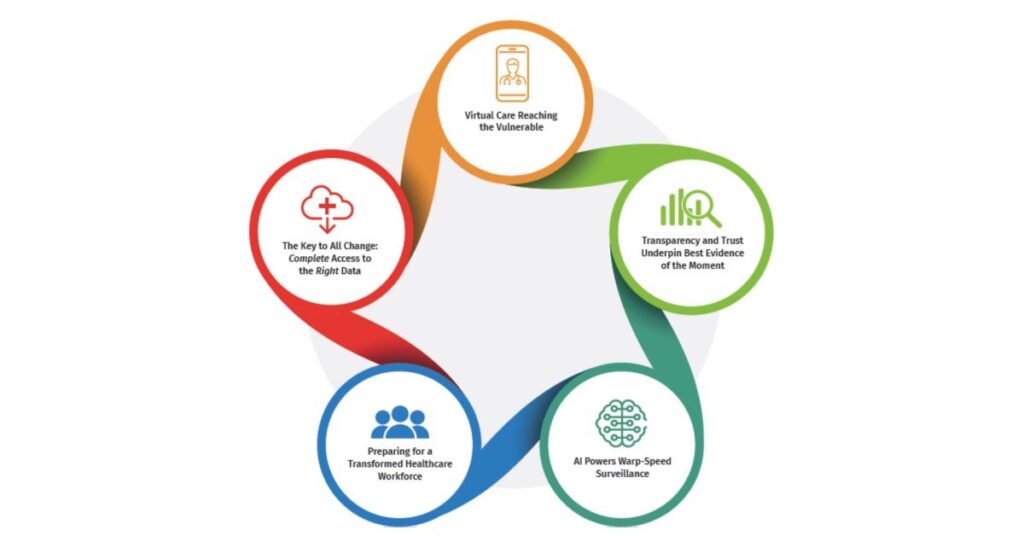Table of Contents
Although US healthcare is benefiting greatly from innovative business models, there is still significant room for growth, especially in the fastest-growing companies.US healthcare leaders are aggressively exploring novel business models, such as pure-play specialization and vertical integration. These company models’ growth rates, nevertheless, have differed in recent years. Though no company concentrates on just one of these, vertical integration-focused business models have yielded the most growth. Executives in US healthcare is exploring a range of business models that support both pure play specialization and vertical integration.

Vertical-integration-focused business models
Vertical integration, a strategy where a healthcare organization controls multiple stages of the healthcare value chain, has had a profound impact on the US healthcare system. Here are some key areas where vertical integration has influenced the industry:
Cost Reduction in Healthcare costs have been a significant concern globally. Rising costs, coupled with increasing demand for services, have placed immense pressure on governments, healthcare providers, and patients. To address this issue, various strategies have been implemented to reduce healthcare costs.
Vertical integration in healthcare can significantly enhance the quality of care provided to patients. By controlling multiple stages of the value chain, organizations can streamline processes, reduce redundancies, and ensure better coordination between different providers. This leads to improved patient outcomes, reduced medical errors, and a more seamless care experience. Additionally, vertically integrated organizations can leverage data analytics to identify areas for improvement, implement evidence-based practices, and ensure that patients receive the most effective and up-to-date care.
Market Consolidation in Healthcare Vertical integration in healthcare can lead to market consolidation, as large organizations acquire smaller providers and insurance plans. This can result in reduced competition, limiting consumer choice and potentially driving up prices. While market consolidation can offer certain benefits, such as economies of scale and improved efficiency, it also raises concerns about market power and the potential for anti-competitive behavior.
Overall, the impact of vertical integration on US healthcare is complex and multifaceted. While it has the potential to improve efficiency, reduce costs, and enhance quality of care, it also raises concerns about market concentration, regulatory challenges, and potential barriers to innovation.
Pure-play, specialization-focused business models
n the US healthcare landscape, pure-play, specialization-focused business models have gained significant traction. These models involve organizations that concentrate on a specific niche or area within the healthcare industry, rather than attempting to provide a wide range of services. This specialization allows for a deeper focus on expertise, innovation, and efficiency.
Examples of pure-play, specialization-focused business models in the US include:
- Telehealth companies: These organizations offer healthcare services remotely, often through video or phone consultations. Examples include Tele doc and Doctor on Demand.
- Medical device manufacturers: These companies specialize in the development and production of specialized medical devices, such as prosthetics, diagnostic equipment, or surgical tools. Examples include Medtronic and Abbott Laboratories.
- Specialty pharmaceuticals: These companies focus on developing and manufacturing drugs for specific diseases or patient populations. Examples include Vertex Pharmaceuticals and Gilead Sciences.
- Health IT solutions: These organizations provide technology solutions to healthcare organizations, such as electronic health records, patient portals, and data analytics tools. Examples include Cerner and Epic Systems.
By focusing on a specific niche, pure-play companies can develop deep expertise, streamline operations, and foster innovation. This specialization can lead to improved patient outcomes, reduced costs, and increased efficiency within the healthcare system.
Value Creation Through Business Model Innovation in US Healthcare
The US healthcare system has been undergoing significant transformation in recent years, driven by factors such as rising costs, changing demographics, and advancements in technology. Business model innovation has emerged as a critical strategy for healthcare organizations to create value, improve efficiency, and enhance patient outcomes. By adopting new approaches, leveraging technology, and focusing on patient-centered care, organizations can drive innovation, reduce costs, and improve the overall quality of healthcare services.

Benefits of Business Model Innovation in US Healthcare
- Improved Efficiency Business model innovation in US healthcare has led to significant improvements in efficiency. By adopting new technologies, streamlining processes, and reducing administrative burdens, healthcare organizations can operate more effectively and reduce costs. This increased efficiency can benefit both patients and providers, leading to improved access to care, reduced wait times, and lower healthcare expenditures.
- Enhanced Patient Outcomes Business model innovation in US healthcare has led to significant improvements in patient outcomes. By focusing on value-based care, telehealth, and patient-centered approaches
- Increased Access to Care Business model innovation in US healthcare has led to increased access to care, particularly in underserved areas. Telehealth and remote monitoring technologies have enabled patients to receive care from the comfort of their homes, reducing the need for in-person visits. Additionally, partnerships between healthcare organizations and community-based organizations have expanded access to care for vulnerable populations. These innovations have helped to address healthcare disparities and improve the overall health of the population.
- Sustainable Growth: Business model innovation can help healthcare organizations achieve sustainable growth in a competitive market.
Challenges through Business Model Innovation
Despite the potential benefits of business model innovation in US healthcare, several challenges remain:
- Regulatory Barriers: The complex regulatory landscape in the US can hinder innovation and limit the ability of healthcare organizations to implement new business models.
- Data Privacy and Security: Concerns about data privacy and security can pose significant challenges for healthcare organizations that rely on data-driven decision making.
- Interoperability Issues: The lack of interoperability between different healthcare systems and technologies can create barriers to innovation and limit the ability to share data effectively.
- Resistance to Change: Healthcare providers and patients may be resistant to new business models, particularly those that require significant changes to traditional practices.
- Cost and Investment: Implementing new business models can be costly and require significant investments in technology, infrastructure, and training.
- Competition: Increased competition from new entrants and established players can make it difficult for healthcare organizations to differentiate themselves and capture market share.
Conclusion
Business model innovation has emerged as a critical strategy for healthcare organizations in the United States to create value, improve efficiency, and enhance patient outcomes. By adopting new approaches, leveraging technology, and focusing on patient-centered care, organizations can drive innovation, reduce costs, and improve the overall quality of healthcare services. As the healthcare landscape continues to evolve, the ability to adapt and innovate will be essential for organizations to thrive in the future.